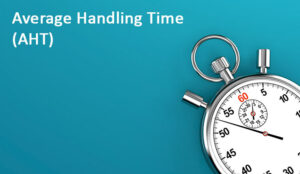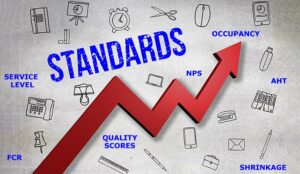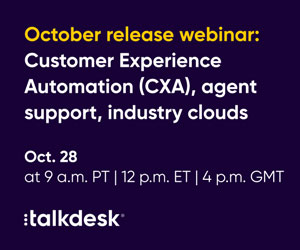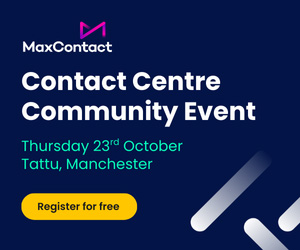Is There An Industry Average for the Time A Customer is Waiting Before They Speak to Someone?
I know our aim is to answer calls as quickly as possible but is there a “industry average” time that is acceptable for a client to wait before their call is answered i.e 10 seconds?
Question asked by rikuslouw
There Isn’t One…
I do not believe there is an acceptable call wait time to queue that covers all industries and sectors.
I would take a look back at your Abandon Rate and work out what the Average Time to Abandon is, that may give you a starting point to address the core problem for your own environment – an abandoned call is an unhappy customer and potential lost revenue.
Try Callbacks
One option to look at is to offer the callers the option of a callback, say after 15 seconds on hold or when you know there is a queue building.
For those who take the callback option, they can be sure you will get back to them in the same time they would otherwise have been on hold.
This gives good customer satisfaction levels, a reduction in Abandon Rates and increase in sales revenues as a result.
Read more here: Is There a Correlation Between Queue Time and Customer Satisfaction Levels?
With thanks to kmcateer
The Average Speed of Answer
It is Industry Specific
It’s completely industry, and even caller dependent. In general we are seeing Average Speed of Answer (ASA) and SLA targets increase in a lot of organisations, from 20 seconds to 50 or 60 seconds.
These organisations have found that the difference in dissatisfaction levels between somebody who has their call answered in 20 seconds compared with somebody who waited 60 seconds is negligible, whilst the cost of achieving an ASA of 20 seconds during peak volumes is significantly higher.
Providing callers with an accurate expectation about how long they should be expected to wait along with respectful alternatives to waiting on hold, such as a callback, all help reduce abandon times.
Call Queues aren’t all that bad
From the contact centre point of view, of course, queues (real, holding calls or virtual) can be good. They keep staff occupied and afford the opportunity to offer a differentiated level of service to those customers you value the most by answering them more quickly than others.
As always, try to match your level of service with the overall experience your customers expect. If you’re winning business based on a high quality version of a widely available product backed up by great advice and assistance answering calls quickly might be important. Whereas if you’re competing on price or you have the “must have product” a longer hold time may be acceptable and have little impact on repeat business or metrics like Net Promoter Score.
I’ve not heard anybody admit to keeping low value or costly customers deliberately on hold longer, but maybe somewhere…
With thanks to slambert
The Average Speed of Answer 80/20 to 90/10
The “target” industry Average Speed of Answer seems to vary from around 80% of calls answered in 20 seconds to 90% of calls answered in 10 seconds.
It also differs from channel to channel, have a read of this section of this article on the Industry Standards:
What Are the Contact Centre Service Level Standards?
You can read the full report, where we published this research: 2019 Survey Report: Is Your Contact Centre Delivering Exceptional Customer Service?
With thanks to Jonty
How It Feels for the Customer
My experience of this is the same as Jonty’s. The range is somewhere between 80% of calls answered within 20 secs, and 90% of calls answered within 10 seconds with Abandonment Rate upper limits set at somewhere between 3% and 5%.
It all depends on what image you want to give to your customers and whether you you want to differentiate yourself from the competition through service.
Personally if it takes more than 3 rings before someone answers my call I start wondering whether I have placed my business with the right company, but when I first started out we had to make sure we answered calls within 3 rings or else.
And in those days I was working for a business that didn’t have any competition and had the monopoly in the market. Like Deborah Meaden during her talk at the Call Centre Expo, I also wonder whether there is something to be said for ‘old fashioned’ customer service.
There is a lot of improvement, although it may not be in the right direction
Just to reassure you, I’m not seriously suggesting that you have an SLA to answer calls within 3 rings.
What customers expected 30 years ago is not the same as their expectations today. It does however show that progress doesn’t necessarily mean improvement.
What really counts when it comes to service is:
- Keeping wait times to a minimum
- Keeping abandonment rates to a minimum
- Keeping levels of IVR to a minimum and that the customer gets to speak to someone who is professional and trained to help them with their enquiry.
With thanks to Janette
Additional Considerations for ASA and SLA
I think you got some great answers on your original post. I think slambert said it best and let me try to put this in practical term for you.
Analyse your Abandons
Every ACD reporting package will let you see the % of customers abandoning by seconds. By analysing this data, you will quickly see how long your customers will wait until they hang up.
It is customer dependent and industry dependent. Most of the time, the majority of customers will abandon within 30 seconds and 60 seconds. If you can identify an ASA that will get to most of these customers, then that should be your target ASA and abandon %.
Survey your Customer Base
Additionally, I would do semi-annual customer satisfaction survey of your customer base.
They are the best source of information for you to see if your SLAs and your quality delivery are set correctly. If you are answering your customer calls timely and you are providing the right customer service to your base, then the survey will reflect that fact.
If not, you will get that fact too from your customers. Workforce Planning, Service Level management and quality customer service are high wire acts that we must balance correctly to satisfy both the external customers and the internal customers.
If you set and manage your customer expectations properly, you can run a low cost and high efficiency call centre operation that doesn’t have to be a 100% cost centre for your company.
With thanks to thetuan
Why People Call
You have to think of why people call and how long they’re prepared to wait. If you were calling to claim a prize you’d probably queue longer than if you were calling for a balance on your cheque account.
With thanks to Jack7176
Improving Customer Service Image
Now that Twitter is used a way to communicate with corporations, call centres should do well to monitor their hold times.
Kudos to those call centres represented here that keep it under a minute.
With thanks Anon
How Long Does the Customer Want to Wait For
Sometimes it how much a customer wants to make contact.
Manchester United ticket lines have a wait time of up to 30 minutes with no abandoned calls!
With thanks to JudithCC
ASA
I have found this still to be the case, good advice thank you!
With thanks to Pam
Author: Jonty Pearce
Published On: 12th Apr 2022 - Last modified: 1st Oct 2025
Read more about - Call Centre Questions, Call Centre Answers





































